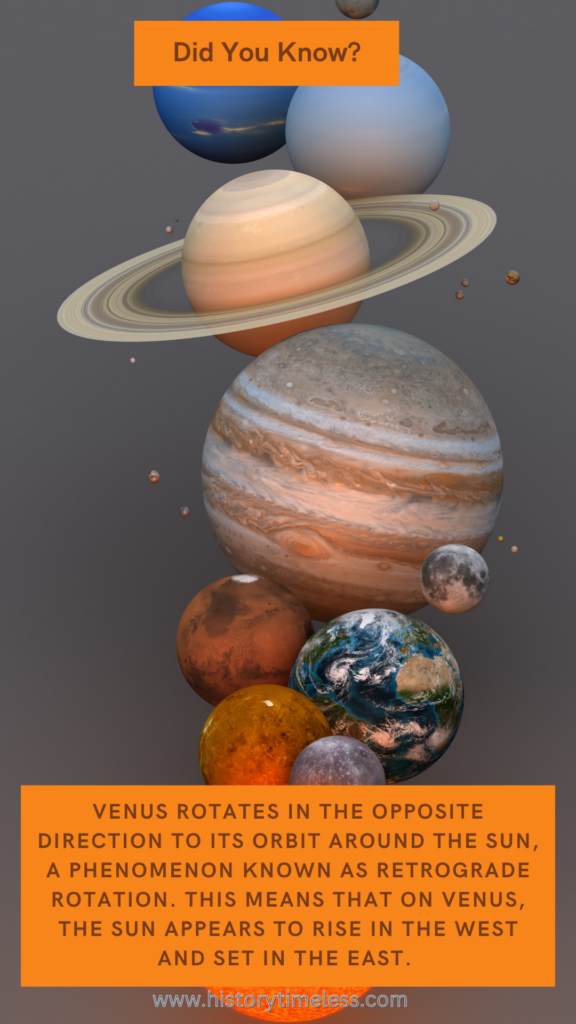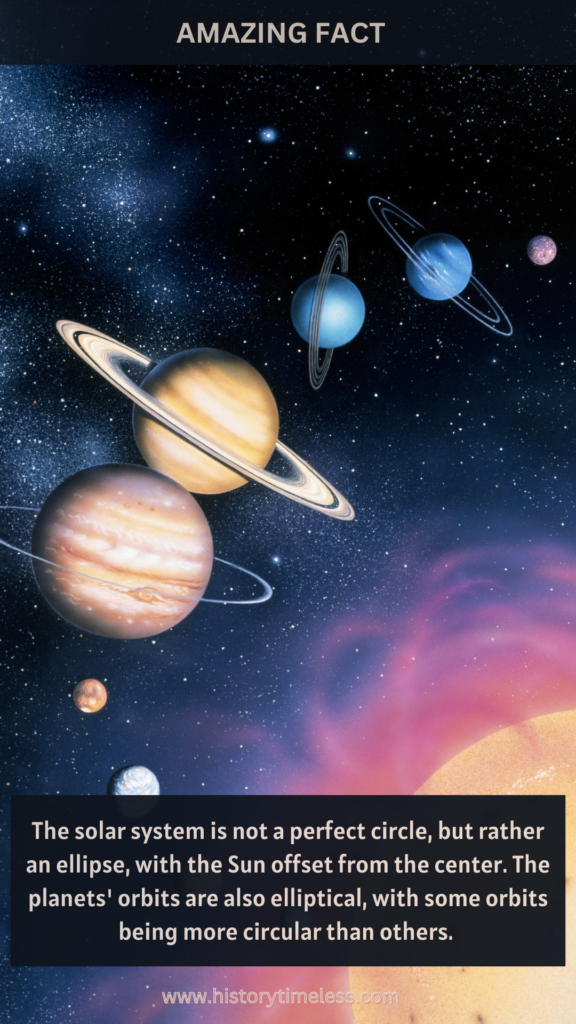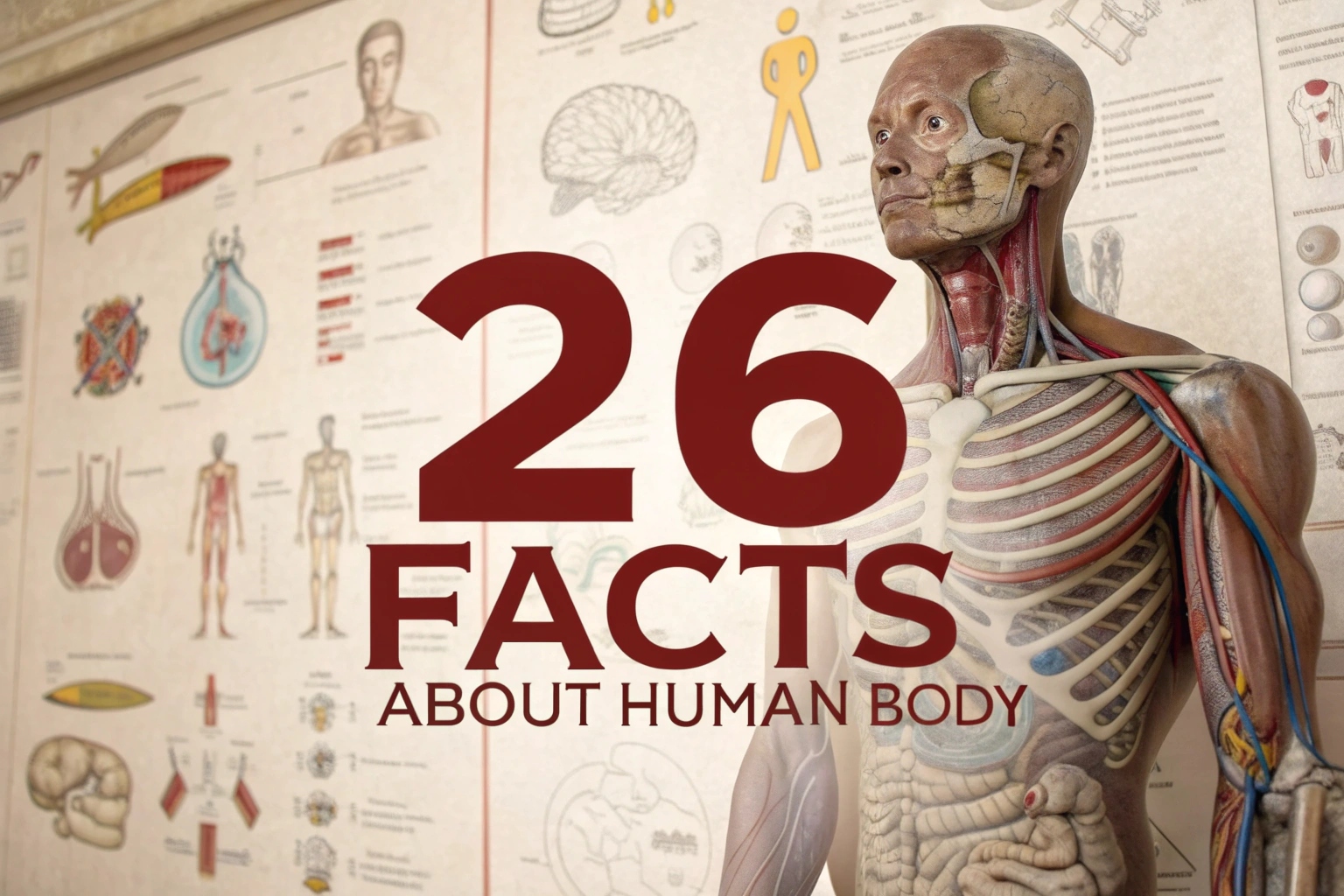The solar system is a vast and wondrous place, full of mysteries waiting to be uncovered. From the scorching hot surface of the Sun to the icy cold rings of Neptune, each planet and celestial body has its own unique characteristics and features. In this blog, we’ll explore 30 mind-blowing facts about the solar system that will leave you amazed and fascinated.
1. The Great Dark Spot of Neptune
The Great Dark Spot is a massive storm on Neptune, similar to Jupiter’s Great Red Spot. This storm is large enough to swallow several Earths whole and has winds that can reach up to 2,100 kilometers per hour. The Great Dark Spot is a mysterious phenomenon that is still not fully understood by scientists.
2. Mars’ Volcanic Past
Mars has the largest volcano in the solar system, Olympus Mons, which stands at an impressive 27 km high.
This volcano is a shield volcano, formed by the eruption of fluid lava flows, and is around three times the height of Mount Everest. The volcano is a testament to Mars’ volcanic past and the planet’s potential for geological activity.
3. The Rings of Saturn are Made of Ice
The stunning rings of Saturn are made up of ice particles, ranging in size from tiny dust grains to massive boulders.
The rings are incredibly thin, measuring only about 30 feet thick in some areas, but they stretch out for hundreds of thousands of miles. The icy composition of the rings is what gives them their breathtaking beauty and fragility.
4. Jupiter’s Magnetic Field is a Trap
Jupiter’s magnetic field is so strong that it traps charged particles from the solar wind, creating a region around the planet known as the magnetosphere.
This trap is filled with high-energy particles that can be deadly to both humans and electronic equipment. The magnetic field is also what powers Jupiter’s incredible aurora displays.
5. Venus is Spinning Backwards
Venus rotates in the opposite direction to its orbit around the Sun, a phenomenon known as retrograde rotation. This means that on Venus, the Sun appears to rise in the west and set in the east.

The reason for this unusual rotation is still unknown, but it’s thought to be the result of a massive asteroid impact early in the planet’s history.
6. The Moon is Moving Away from Earth
The Moon is slowly moving away from Earth at a rate of about 3.8 centimeters per year. This is because the Moon’s orbit is increasing in size due to the tidal interactions between the two bodies.
In about 50 billion years, the Moon will be too far away from Earth to be held in a stable orbit, and it will eventually escape into space.
7. Uranus’ Tilted Axis
Uranus has a highly tilted axis, which means that the planet essentially spins on its side. This unusual orientation leads to extreme seasons on Uranus, with the poles experiencing constant sunlight or darkness for up to 21 years at a time.
The reason for this tilt is still unknown, but it’s thought to be the result of a massive impact or gravitational interaction with another object in the solar system.
8. The Atmosphere of Titan
Titan, Saturn’s largest moon, has a thick atmosphere that’s rich in nitrogen and methane. The atmosphere is so dense that it would be possible to fly a plane on Titan, but the temperature is a chilly -179°C.
The atmosphere is also home to complex organic molecules, which are the building blocks of life, making Titan a fascinating target in the search for extraterrestrial life.
9. Jupiter’s Moon Io is Volcanically Active
Io, Jupiter’s innermost moon, is the most volcanically active body in the solar system. The moon’s surface is covered in volcanoes, with over 400 active volcanoes and a surface that’s constantly being resurfaced by lava flows.
The volcanic activity is caused by Jupiter’s gravitational pull, which heats up Io’s interior and creates intense volcanic activity.
10. The Sun Loses 4 Million Tons of Mass Every Second
The Sun is constantly losing mass through a process known as solar wind, where charged particles are ejected from the surface of the Sun.
This process results in the loss of about 4 million tons of mass every second, which is an incredible amount of energy and material. Despite this loss, the Sun has enough fuel to last for another 5 billion years.
11. The Kuiper Belt is a Reservoir of Small Bodies
The Kuiper Belt is a region of the solar system that contains a large number of small, icy bodies, including dwarf planets like Pluto.
The Kuiper Belt is thought to be a reservoir of small bodies that were left over from the formation of the solar system, and it’s a fascinating target for astronomers studying the early history of the solar system.
12. Mars has the Longest Valley in the Solar System
The Valles Marineris on Mars is the longest valley in the solar system, stretching for over 4,000 km. The valley is up to 7 km deep and was formed by tectonic activity and water flow.
The Valles Marineris is a testament to the geological activity that shaped Mars in the past and provides valuable insights into the planet’s history.
13. The Oort Cloud is a Vast, Spherical Shell
The Oort Cloud is a distant, spherical shell of icy bodies that surrounds the solar system. The Oort Cloud is thought to be the source of long-period comets, which are comets that take more than 200 years to orbit the Sun.
The Oort Cloud is a vast, unexplored region of the solar system that’s still poorly understood by astronomers.
14. Neptune’s Moon Triton has Geysers
Triton, Neptune’s largest moon, has geysers that erupt plumes of ice crystals into space. The geysers are thought to be fueled by the moon’s internal heat and the pressure of the frozen nitrogen and methane on the surface.
The geysers make Triton a fascinating target for astronomers studying the moon’s subsurface ocean and potential for life.
15. The Solar System is Not a Perfect Circle
The solar system is not a perfect circle, but rather an ellipse, with the Sun offset from the center. The planets’ orbits are also elliptical, with some orbits being more circular than others.

The ellipses are a result of the gravitational interactions between the planets and the Sun, and they have a significant impact on the orbits and stability of the solar system.
16. Saturn’s Moon Enceladus has a Subsurface Ocean
Enceladus, Saturn’s icy moon, has a subsurface ocean that’s in contact with rock, making it a potential habitat for life.
The ocean is thought to be warmed by tidal heating, which is caused by the gravitational pull of Saturn on the moon. The subsurface ocean makes Enceladus a fascinating target in the search for extraterrestrial life.
17. Jupiter’s Great Red Spot is Shrinking
The Great Red Spot, Jupiter’s iconic anticyclonic storm, has been shrinking over the past century. The storm has been raging for at least 150 years, but its size has decreased significantly in recent years.
The reason for the shrinkage is still unknown, but it’s thought to be related to changes in Jupiter’s atmosphere and wind patterns.
18. The Solar System has a Boundaries with Interstellar Space
The solar system has a boundary with interstellar space, known as the heliopause, which marks the edge of the Sun’s influence.
The heliopause is the point at which the solar wind slows down and becomes indistinguishable from the interstellar medium. The boundary is a fascinating region that’s still poorly understood by astronomers.
19. Pluto has a Heart-Shaped Region
Pluto has a heart-shaped region on its surface, known as Tombaugh Regio, which is a nitrogen ice plain. The region is thought to be the result of a unique combination of geological and atmospheric processes, and it’s a fascinating target for astronomers studying the dwarf planet’s surface and composition.
20. The Asteroid Belt is a Graveyard of Planetary Formation
The asteroid belt is a region of the solar system that’s filled with the remains of planetary formation. The asteroids are thought to be the leftover building blocks of the planets, and they provide valuable insights into the early history of the solar system.
The asteroid belt is a fascinating target for astronomers studying the formation and evolution of the solar system.
21. Mars has Polar Ice Caps
Mars has polar ice caps, which are made up of water ice and dry ice (frozen carbon dioxide). The ice caps are seasonal, and they grow and shrink depending on the planet’s distance from the Sun. The ice caps are a fascinating target for astronomers studying the Martian climate and potential for life.
22. The Solar Wind is a Stream of Charged Particles
The solar wind is a stream of charged particles that’s emitted by the Sun, including protons, electrons, and alpha particles. The solar wind is what causes the aurora displays on Earth and other planets, and it plays a crucial role in shaping the solar system’s magnetic fields and atmospheres.
23. Jupiter’s Magnetic Field is Powered by its Core
Jupiter’s magnetic field is powered by the planet’s core, which is made up of liquid iron and nickel. The core is incredibly hot, with temperatures reaching up to 20,000 Kelvin, and it’s what generates the planet’s massive magnetic field.
The magnetic field is so strong that it traps charged particles from the solar wind and creates a region around the planet known as the magnetosphere.
24. The Kuiper Belt is a Source of Short-Period Comets
The Kuiper Belt is a source of short-period comets, which are comets that take less than 200 years to orbit the Sun. The comets are thought to be perturbed from the Kuiper Belt by the gravitational influence of the giant planets, and they provide valuable insights into the early history of the solar system.
25. Saturn’s Rings are Dynamic and Changing
Saturn’s rings are dynamic and changing, with particles constantly colliding and being ejected from the ring system. The rings are thought to be relatively young and short-lived, and they’re a fascinating target for astronomers studying the ring system’s evolution and dynamics.
26. Uranus has a Highly Eccentric Orbit
Uranus has a highly eccentric orbit, which takes it from 2.66 to 3.00 astronomical units (AU) from the Sun. The eccentric orbit means that Uranus experiences extreme variations in temperature and solar radiation, which has a significant impact on the planet’s atmosphere and climate.
27. The Oort Cloud is a Source of Long-Period Comets
The Oort Cloud is a source of long-period comets, which are comets that take more than 200 years to orbit the Sun.
The comets are thought to be perturbed from the Oort Cloud by the gravitational influence of the galactic tide and passing stars, and they provide valuable insights into the early history of the solar system.
28. Mars has the Tallest Dust Storms in the Solar System
Mars has the tallest dust storms in the solar system, with some storms reaching heights of up to 10 km. The dust storms are thought to be caused by the abrasive nature of the Martian soil and the planet’s thin atmosphere, which allows the dust to be lifted high into the air.
29. Jupiter’s Moon Europa has a Subsurface Ocean
Europa, Jupiter’s icy moon, has a subsurface ocean that’s thought to be in contact with rock, making it a potential habitat for life.
The ocean is warmed by tidal heating, which is caused by the gravitational pull of Jupiter on the moon. The subsurface ocean makes Europa a fascinating target in the search for extraterrestrial life.
30. The Solar System is Still Evolving and Changing
The solar system is still evolving and changing, with the planets and other celestial bodies interacting and influencing each other in complex ways.
The solar system’s evolution is driven by a combination of geological, astronomical, and astrophysical processes, and it’s a fascinating area of study that continues to reveal new and exciting discoveries about the solar system and its place in the universe.
Explore Additional Captivating Insights:
25 Fascinating Facts About the Moon You’ll Love
30 Fascinating Earth Facts You Need to Know Today
22 Stunning Facts About Neptune You Need to Know





